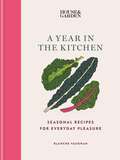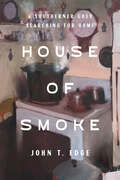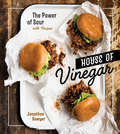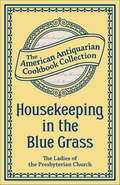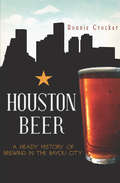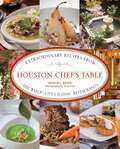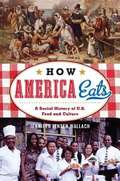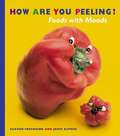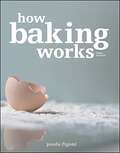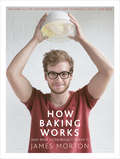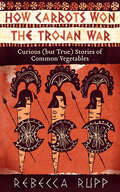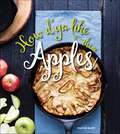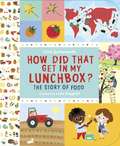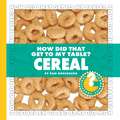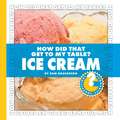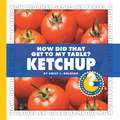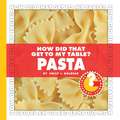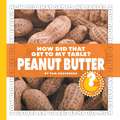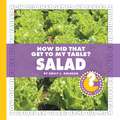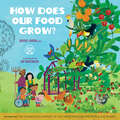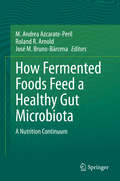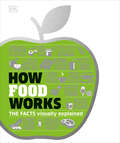- Table View
- List View
Hotel Splendide
by Ludwig Bemelmans&“Truly a great book—unique, invaluable and unapproachable as the gold standard of the genre… Bemelmans got there first, more frequently, and better.&” —Anthony Bourdain Acerbic, colorful, and spirited stories from a bygone era: behind the scenes in a grand NY hotel, from the author of the Madeline books Picture David Sedaris writing Kitchen Confidential about the Ritz in New York in the 1920s, which had the style and charm of The Grand Budapest Hotel…In this charming and uproariously funny hotel memoir, Ludwig Bemelmans uncovers the fabulous world of the Hotel Splendide—the thinly disguised stand-in for the Ritz—a luxury New York hotel where he worked as a waiter in the 1920s. With equal parts affection and barbed wit, he uncovers the everyday chaos that reigns behind the smooth facades of the gilded dining room and banquet halls. In hilarious detail, Bemelmans sketches the hierarchy of hotel life and its strange and fascinating inhabitants: from the ruthlessly authoritarian maître d'hôtel Monsieur Victor to the kindly waiter Mespoulets to Frizl the homesick busboy. Illustrated with his own charming line drawings, Bemelmans' tales of a bygone era of extravagance are as charming as they are riotously entertaining. &“[Bemelmans] was the original bad boy of the NY hotel/restaurant subculture, a waiter, busboy, and restaurateur who &“told all&” in a series of funny and true (or very near true) autobiographical accounts of backstairs folly, excess, borderline criminality, and madness in the grande Hotel Splendide… If you like stories about old New York as I do, this classic will have you laughing out loud.&” –Anthony Bourdain
House & Garden A Year in the Kitchen: Seasonal recipes for everyday pleasure
by Blanche Vaughan'The elegant simplicity and style of every word and picture in this book are a joy.' JEREMY LEE'An engaging and inspiring book of food that is a real pleasure.' CLAUDIA RODEN'I love the flavour-dense simplicity of Blanche's recipes, with the garden at their heart. This is exactly how I want to eat.' SARAH RAVEN'Blanche Vaughan combines easy-to-achieve recipes with an inspiring voice that encourages experiment, whether you are cooking a simple supper for two or a special occasion feast. Her calm and reflective attitude to cooking is mirrored in the beautiful photographs, while her emphasis on seasonality truly makes it a book for all seasons.' ALEXANDRA SHULMAN'These are the recipes I cook at home, dishes that I turn to throughout the year because they answer a craving for a particular thing to eat at a particular time. The recipes evolved from ideas for what to cook and what I chose to include in the food pages of House & Garden each month: a reflection of our appetites, the food growing then, the weather, how we are living and eating each season.'BLANCHE VAUGHANA Year in the Kitchen, written and curated by Blanche Vaughan, Food Editor of House & Garden, shares more than 150 deliciously easy recipes inspired by the seasons. Recipes include:- Asparagus Carbonara (Spring)- Summer Greens & Soft-Cheese Pie (Summer)- Pumpkin Soup with Gruyère and Sage (Autumn)- Claudia Roden's Chicken with Sweet Wine and Grapes (Winter)
House & Garden A Year in the Kitchen: Seasonal recipes for everyday pleasure
by Blanche Vaughan'The elegant simplicity and style of every word and picture in this book are a joy.' JEREMY LEE'An engaging and inspiring book of food that is a real pleasure.' CLAUDIA RODEN'I love the flavour-dense simplicity of Blanche's recipes, with the garden at their heart. This is exactly how I want to eat.' SARAH RAVEN'Blanche Vaughan combines easy-to-achieve recipes with an inspiring voice that encourages experiment, whether you are cooking a simple supper for two or a special occasion feast. Her calm and reflective attitude to cooking is mirrored in the beautiful photographs, while her emphasis on seasonality truly makes it a book for all seasons.' ALEXANDRA SHULMAN'These are the recipes I cook at home, dishes that I turn to throughout the year because they answer a craving for a particular thing to eat at a particular time. The recipes evolved from ideas for what to cook and what I chose to include in the food pages of House & Garden each month: a reflection of our appetites, the food growing then, the weather, how we are living and eating each season.'BLANCHE VAUGHANA Year in the Kitchen, written and curated by Blanche Vaughan, Food Editor of House & Garden, shares more than 150 deliciously easy recipes inspired by the seasons. Recipes include:- Asparagus Carbonara (Spring)- Summer Greens & Soft-Cheese Pie (Summer)- Pumpkin Soup with Gruyère and Sage (Autumn)- Claudia Roden's Chicken with Sweet Wine and Grapes (Winter)
House of Smoke: A Southerner Goes Searching for Home
by John T. EdgeThe author of The Potlikker Papers: A Food History of the Modern South tells his own story this time. Of growing up in a house wrecked by violence and a South haunted by racism. And of how his search for home led him to find escape and belonging through food. Until he realizes that gathering at the table is just one small step toward reckoning.&“A story for all Americans on a path to self-awareness, honesty, and love.&”—Wright Thompson, New York Times bestselling author of Pappyland and The BarnIn this unflinching and moving memoir, John T. Edge takes us on a quest for home in a South that has both held him close and pushed him away, as he tries and fails and tries again to rewrite the stories he inherited. Born in a house where a Confederate general took his first breath and the Lost Cause narrative was gospel, troubled by the violence he witnessed as a boy, Edge ran from his past, searching for a newer and better South. As founding director of the Southern Foodways Alliance and a contributor to newspapers and magazines, he told stories that showcased those possibilities.In the process, Edge became one of the most visible and powerful voices in American food...until he found himself denounced by the audience he once guided, faced down the limits of his work, and returned to his origins to find himself once again. Beginning in Georgia and concluding in Mississippi, his search spans the Deep South and charts a very American story of the truth telling and soul searching it takes to love your people and your place.
House of Vinegar: The Power of Sour, with Recipes
by Jonathon SawyerAn exploration of the acid bite of vinegar and how it influences and elevates all aspects of cooking, from a James Beard award-winning chef and vinegar evangelist, with 80 recipes for vinegars and dishes that use them.From owning a Bon Appétit Best New Restaurant to being a Food & Wine Best New Chef to winning a James Beard award, Jonathon Sawyer has earned almost every food world accolade. In House of Vinegar, his fascinating and compelling chef's take on using vinegar, he utilizes acid to revolutionize dishes by enhancing and balancing flavor. Starting with the history of vinegar, he describes how to make your own vinegars at home, followed by preparations for use in vinaigrettes, sauces, marinades, braises, desserts, and even drinks--dishes like Monday Night Pork Chop with Salsa Verde, Smoky Peach Confit Chicken Wings, Sea Scallop Ceviche, and Olive Oil and Vinegar Gelato. With his unique and engaging voice, Sawyer helps professionals and home cooks alike understand how to channel the power of sour.
Household Tips: Over 300 Useful and Valuable Home Hints
by A L FowlerFirst published in 1916, A L Fowler's book of household tips is an indispensable guide to all those 'Kim and Aggy' moments - from cleaning a dirty clothesline and removing paint from window panes, to obliterating a whole host of stains, from rust to indelible ink, to blood and mildew. This delightful little volume also reveals the best way to rid yourself of those annoying household pests, including ants, beetles and flies; how to remove odours from your hands; and advises on the use of natural products to clean floors, windows and cooking utensils. Fowler also shows the twentieth-century housewife how to perform miracles in the kitchen, with tips on making pastry extra flaky, the quickest way to peel carrots and how to remove burns from a cake.
Housekeeping in the Blue Grass: A New and Practical Cook Book
by Paris KentuckyThe category of “charity cookbook” is a favorite in American culinary history. Funds raised by sales of these cookbooks, with recipes donated by women’s groups and church societies, were used to aid a wide variety of local causes and charities. Housekeeping in the Blue Grass belongs in this category—an excellent example of regional cooking styles of the post-Civil War Midwest. Several hundred recipes compiled by the Ladies of the Presbyterian Church in Paris, Kentucky, to raise funds for the Missionary Society include a complete range of dishes from soup to nuts. The introduction notes that the Blue Grass region of Kentucky is “considered the garden-spot of the State. It is celebrated for the fertility of its soil, the beauty of its pastures . . . and last, but not least, for the hospitality of its people and their table luxuries,” which are then richly described in the book. Over forty women who contributed recipes are acknowledged by name at the beginning of the book, and throughout, many of the recipes are attributed to their donors. The book also includes over 40 ads for local commercial establishments that, presumably, contributed funds for publication of the book. This edition of Housekeeping in the Blue Grass by Ladies of the Presbyterian Church, Paris, Kentucky, was reproduced by permission from the volume in the collection of the American Antiquarian Society, Worcester, Massachusetts. Founded in 1812 by Isaiah Thomas, a Revolutionary War patriot and successful printer and publisher, the Society is a research library documenting the life of Americans from the colonial era through 1876. The Society collects, preserves, and makes available as complete a record as possible of the printed materials from the early American experience. The cookbook collection includes approximately 1,100 volumes.
Houston Beer: A Heady History of Brewing in the Bayou City (American Palate)
by Ronnie CrockerFrom the early days, and long before Americans had ever heard the term "craft beer," settlers in the Bayou City excelled in the art of ales, stouts and lagers. In 1913, it was a Houston brewery that claimed the distinction of "the world's finest bottled beer" after winning an international competition in Belgium. The unfortunate rise of Prohibition put the industry on hold, but recent years have seen a strong resurgence. At the beginning of 2008, Saint Arnold Brewing Company was the only craft brewery in Houston. Just a few years later, there are five and counting within an hour's drive of downtown. Journalist and "Beer, TX" blogger Ronnie Crocker chronicles Houston's long and surprising history of brewing, tracing everything from the grand legacy of Anheuser-Busch to the up-and-coming craft beer makers and those brewing it right at home.
Houston Chef's Table: Extraordinary Recipes From The Bayou City's Iconic Restaurants (Chef's Table)
by Arthur MeyerHouston is the dining out capital of Texas, with a food scene that reflects the city itself—talented, entrepreneurial, diverse, and quite modern. Barbeque and Tex-Mex are certainly present, but do not define the dining experience. Modern American cuisine brought into focus by Mark Cox of Mark’s American Cuisine and fine-dining Italian style served by award-winning Tony’s both set the stage for a dining experience independent of Texas’ reputation for big steaks and enchiladas. And numerous establishments court the palate for Thai, Indian, Caribbean, Brazilian, and Turkish foods. Houston Chef’s Table is the first cookbook to gather Houston’s best chefs and restaurants under one cover. Including a signature “at home” recipe from seventy iconic dining establishments, the book is a celebration of the city’s diverse cultural influences. Full-color photos throughout highlight fabulous dishes, famous chefs, and Houston landmarks.
How America Eats: A Social History of U. S. Food and Culture (American Ways)
by Jennifer Jensen Wallach<p><i>How America Eats: A Social History of U.S. Food and Culture</i>, by food and social historian Jennifer Wallach, sheds a new and interesting light on American history by way of the dinner table. It is, at once, a study of America's diverse culinary history and a look at the country's unique and unprecedented journey to the present day. While undeniably a "melting pot" of different cultures and cuisines, America's food habits have been shaped as much by technological innovations and industrial progress as by the intermingling and mixture of ethnic cultures. By studying what Americans have been eating since the colonial era, we are further enlightened to the conflicting ways in which Americans have chosen to define themselves, their culture, their beliefs, and the changes those definitions have undergone over time. <p>Understanding the American diet is the first step toward grasping the larger truths, the complex American narratives that have long been swept under the table, and the evolving answers to the question: What does it mean to be American?
How Are You Peeling?
by Saxton Freymann Joost ElffersA wide range of emotions is presented through fruit and vegetable sculptures. Readers discover the range of expressions that a tomato or a kiwi can display, as they delight in the rhyming text that asks about their own emotions.
How Baking Works: Exploring The Fundamentals Of Baking Science
by Paula I. FigoniThe essence of baking is chemistry, and anyone who wants to be a master pastry chef must understand the principles and science that make baking work. This book explains the whys and how's of every chemical reaction, essential ingredient, and technique, revealing the complex mysteries of bread loaves, pastries, and everything in between. Among other additions, How Baking Works, Third Edition includes an all-new chapter on baking for health and wellness, with detailed information on using whole grains, allergy-free baking, and reducing salt, sugar, and fat in a variety of baked goods.
How Baking Works: …And what to do if it doesn’t
by James MortonThis is baking explained in a clear, accessible and engaging manner: foolproof recipes and perfect cakes and bakes every single time from GBBO favourite, James Morton. With stunning photography and a whole host of mouth-watering treats to try, as well as tips on how to salvage baking mishaps and explanations as to why certain techniques and stages are needed, this is the only baking book you'll ever need...'The best book ever' -- ***** Reader review'Takes baking books to a higher level' -- ***** Reader review'Absolutely perfect' -- ***** Reader review'The only baking book you'll ever need to own' -- ***** Reader review'The best baking book I've ever bought!' -- ***** Reader review'Utterly brilliant' -- ***** Reader review*********************************************************************I want to show you how baking works. I want to prove how easy baking can be.Whether you want light cakes, squidgy brownies, perfect pastry, stress-free macarons or mountainous meringues, this book features a mini-masterclass for each one.Everything's split up into wee, simple steps. There's no faff and you don't need any expensive equipment. You don't even need a sieve.And for baking veterans, this book tells you why you're doing what you've been doing all these years.Here's to baking that just works.
How Carrots Won the Trojan War: Curious (but True) Stories of Common Vegetables
by Rebecca RuppDiscover why Roman gladiators were massaged with onion juice before battle, how celery contributed to Casanova’s conquests, how peas almost poisoned General Washington, and why some seventeenth-century turnips were considered degenerate. Rebecca Rupp tells the strange and fascinating history of 23 of the world’s most popular vegetables. Gardeners, foodies, history buffs, and anyone who wants to know the secret stories concealed in a salad are sure to enjoy this delightful and informative collection.
How D'ya Like Them Apples
by Madge BairdAn apple a day keeps the doctor away, but what about a fresh, crisp apple salad? A hearty apple and lentil soup? Succulent apple-stuffed chicken breast or spicy apple curry? Or the classic favorite, apple pie? Madge Baird, a regular Johnny Appleseed, has 75 creative, simple, and delicious ways to make eating apples the highlight of your day.
How Did That Get in My Lunchbox? The Story of Food
by Chris ButterworthFresh retro artwork lures little readers on a tasty trip to farms, dairies, and more. Yum! The best part of a young child's day is often opening a lunchbox and diving in. But how did all that delicious food get there? Who made the bread for the sandwich? What about the cheese inside? Who plucked the fruit? And where did the chocolate in that cookie get its start? From planting wheat to mixing flour into dough, climbing trees to machine-squeezing fruit, picking cocoa pods to stirring a vat of melted bliss, here is a clear, engaging look at the steps involved in producing some common foods. Healthy tips and a peek at basic food groups complete the menu.
How Did That Get to My Table? Cereal (Community Connections)
by Pam RosenbergYoung readers will gain a better understanding on how the breakfast cereal they love ends up on their breakfast table.
How Did That Get to My Table? Ice Cream (Community Connections)
by Pam RosenbergDo you eat food? Do you use electricity? Do you live in a building or go to a school? These are just some of the activities that connect you to other people in your community. Discover the Community Connections we depend on to provide the things we need. Read the How Did That Get to My Table? books to learn about the connections that bring us our food: Cereal, Ice Cream, Ketchup, Orange Juice, Pasta, Peanut Butter, Pumpkin Pie, Salad. Picture descriptions and captions included.
How Did That Get to My Table? Ketchup (Community Connections)
by Emily J. DolbearWith this title, young readers will gain an understanding on how the ketchup they love, is made and how it ends up on their table. Picture captions and descriptions present.
How Did That Get to My Table? Pasta (Community Connections)
by Emily J. DolbearWith this title, young readers will gain an understanding on how the pasta they love, is made and how it ends up on their table. Picture descriptions and captions included.
How Did That Get to My Table? Peanut Butter (Community Connections)
by Pam RosenbergCOMMUNITY CONNECTIONS--HOW DID THAT GET TO MY TABLE? Do you eat food? Do you use electricity? Do you live in a building or go to a school? These are just some of the activities that connect you to other people in your community. Discover the Community Connections we depend on to provide the things we need. Read the How Did That Get to My Table? books to learn about the connections that bring us our food: Cereal, Ice Cream, Ketchup, Orange Juice, Pasta, Peanut Butter, Pumpkin Pie, Salad.
How Did That Get to My Table? Salad (Community Connections)
by Emily J. DolbearYoung readers will gain an understanding on how salad is grown and how it ends up on their table. Picture descriptions added.
How Does Our Food Grow
by Brooke JordenFruits and vegetables all taste great, but how did they end up on your plate? The fresh and colorful foods you know came from farms—that&’s where they grow! Some grow underground and some hang from trees. Can you find them all? Let&’s look and see! Every fruit, vegetable, grain, and legume has its own story: Where do they grow? How do they taste? And how do they impact our bodies and the world around us? In cooperation with Kitchen Connection, an organization committed to improving our food system through education, this colorful picture book introduces readers to the concepts of biodiversity, reducing food waste, and proper growing conditions for different crops in simple, accessible language. With cool facts and challenges throughout, fun rhyming verse, and charming illustrations, How Does Our Food Grow? tells the stories of more than a dozen of your favorite fresh foods. Knowing that our food choices make a difference in our health and the health of our planet empowers us to choose wisely. The more we know, the better we grow.
How Fermented Foods Feed a Healthy Gut Microbiota: A Nutrition Continuum
by M. Andrea Azcarate-Peril Roland R. Arnold José M. Bruno-BárcenaThis book examines the role of fermented foods on human gut health and offers a unique contribution to this rapidly growing area of study. Fermented foods have been consumed by humans for millennia. This method of food preservation provided early humans with beneficial bacteria that re-populated the gut microbiota upon consumption. However, novel methods of production and conservation of food have led to severed ties between the food that modern humans consume and the gut microbiota. As a consequence, there has been a documented increase in the prevalence of autoimmune diseases and obesity, which has been correlated to decreased diversity of gut microbes, while infectious disorders have decreased in the three past decades.With the intention of providing a thorough overview of the relationship between fermented foods, nutrition, and health, the editors have grouped the chapters into three thematic sections: food and their associated microbes, the oral microbiome, and the gut microbiome. After an introduction dedicated to the environmental microbiome, Part I provides an overview of what is currently known about the microbes associated with different foods, and compares traditional forms of food preparation with current industrial techniques in terms of the potential loss of microbial diversity. The chapters in Part 2 explore the oral microbiota as a microbial gatekeeper and main contributor to the gut microbiota. Part 3 introduces beneficial modulators of the gut microbiome starting with the establishment of a healthy gut microbiota during infancy, and continuing with the role of probiotics and prebiotics in health preservation and the imbalances of the gut microbiota. In the final section the editors offer concluding remarks and provide a view of the future brought by the microbiome research revolution.This study is unique in its emphasis on the convergence of two very relevant fields of research: the field of studies on Lactic Acid Bacteria (LAB) and fermented foods, and microbiome research. The relationship between these fields, as presented by the research in this volume, demonstrates the intimate connection between fermented foods, the oral and gut microbiota, and human health. Although research has been done on the impact of diet on the gut microbiome there are no publications addressing the restorative role of food as microbe provider to the gut microbiota. This novel approach makes the edited volume a key resource for scientific researchers working in this field.
How Food Works: The Facts Visually Explained (DK How Stuff Works)
by DKLet this guide be your very own friendly nutritionist, on hand to debunk common food myths and give you the answers to those pressing health questions with easy-to-swallow information.Is red wine good for your heart? Will caffeine raise your blood pressure? How Food Works gives you answers to these and several more questions by investigating claims surrounding a variety of foods and examining them from a biological standpoint. Discover nutritional facts about the food you eat, learn the benefits of superfoods and antioxidants, and go behind-the-scenes of modern food production.Packed with infographics and colorful images, the book delves into the science behind ways of eating including gluten-free and veganism, as well as the benefits of different diets from around the world. Turn the pages to understand why food intolerances occur, what actually makes food organic, how important sell-by dates really are, and how much salt you should really be eating. Readers will also learn about the social and economic implications of food choices, such as eating disorders and fair-trade businesses. Indispensable and accessible to young and old, How Food Works is the perfect health and dietary companion.

